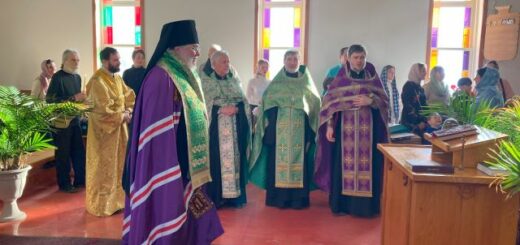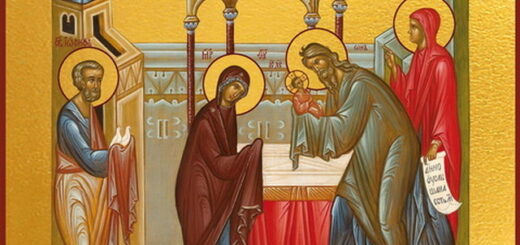The Beheading of the Prophet, Forerunner and Baptist of the Lord John

On September 11, the Church celebrates the Beheading of the Prophet, Forerunner and Baptist of the Lord John. The day of the martyrdom of the “greatest of those born of women” is described by the evangelists Matthew (Matt. 14:1-12) and Mark (Mark 6:14-29). What happened to Herod next? Where is the head of the saint today? Why does fasting on this day mean becoming freer from the slavery of pleasures?
After the death of Herod the Great, the Romans divided the territory of Palestine into four parts, appointing a ruler from their appointees to each of them. Herod Antipas received Galilee from Emperor Augustus for his own governance. John the Baptist denounced the Tetrarch of the fact that he, having left his legal wife (the daughter of the Arabian king Aretas), illegally cohabited with Herodias, the wife of his brother Philip. For this, Herod imprisoned the saint. Some historians claim that Herod did this not so much out of anger at John the Baptist, but because he wanted to protect him from his beloved, knowing her vengeful nature. Herodias was extremely angry with the prophet.
The beheading of John the Baptist took place during a feast in honor of Herod’s birthday, which was attended by nobles, elders and thousand commanders. Herodias’s daughter Salome danced before the guests, thereby winning over Herod, who swore to give her whatever she asked for – even half of his kingdom. At the slander of her mother Herodias, who had the opportunity to take revenge on Saint John and forever get rid of reproaches and accusations, Salome asked to give her the head of John the Baptist and bring it on a platter. Herod was embarrassed, as he feared the wrath of God for the murder of the prophet, as well as the wrath of the people, since the Forerunner was loved by the inhabitants of Galilee. At the same time, it is known from the Gospels that Herod listened to St. John in many ways and acted according to his words – but, as St. John Chrysostom writes, the ruler “reigned over pleasures, or rather, was a slave to pleasures.” Chrysostom believes that, most likely, Herod hid behind an oath as a plausible pretext – in fact, the true reason for his action was the fear of losing Herodias.
And he keeps his oath, given in the presence of high guests: he gives the appropriate order. John the Baptist’s head was cut off and given to Salome. There is a legend according to which the lips of the dead head of the prophet continued to denounce the ruler: “Herod, you should not have the wife of Philip your brother.” After this, Herodias, in a rage, pricked the prophet’s tongue with a needle and buried the head of the Baptist in an unclean place.
Herod continued to rule for some time after the Beheading of John the Baptist – the Gospel story testifies that Pontius Pilate sent him the bound Jesus Christ (Luke 23:7-12).
The further fate of Herod and Herodias was sad. The lovers were afraid that Saint John would rise from the dead, and Herod, when Jesus Christ began to preach, was horrified by this, saying: “This is John the Baptist; he rose from the dead, and therefore miracles are done by him.”
Some time after the Beheading of John the Baptist, Salome, crossing the ice of the Sicoris River in winter, fell under the water and the ice squeezed her in such a way that her head was on the surface, and her body was in the icy water. She tried in vain to get out, but she was unable to do so – this continued until the sharp boulders cut her neck. Salome’s body was not found, and her head was brought to Herod and Herodias, just as the head of John the Baptist was once brought. The beheading of John the Baptist also affected the fate of Herod himself – in revenge for the dishonor of his daughter, the Arabian king Arethas sent his troops against him. Herod was defeated and for this reason angered the Roman emperor Caligula. He was exiled together with Herodias to Gaul, and then to Spain.
After the Beheading of John the Baptist, his disciples buried the body of the saint in the Samaritan city of Sebaste. The holy head of John the Baptist was found and buried in a vessel on the Mount of Olives. Subsequent events developed as follows: one ascetic was digging a ditch for the foundation of a temple, found the shrine and kept it with him. And before his death, fearing that the shrine could be desecrated, he hid it in the ground in the same place where he found it.
In 452, the prophet indicated in a vision the place where his head was hidden – and it was found again, after which it was transferred to Emesa, then to Constantinople. In memory of this, another holiday was established, inextricably linked with the Beheading of John the Baptist – the discovery of his honorable head. The feast of the first and second miraculous discovery is celebrated by the Church on March 8 (February 24, old style).
During the iconoclastic persecutions, the head was taken to Comana (Abkhazia), known as the place of exile and death of St. John Chrysostom, and hidden in the ground. After the restoration of the veneration of icons of St. Patriarch Ignatius was shown the place where the venerable head was kept during prayer at night. Thus, the relic was rediscovered. This event is celebrated on June 7 (May 25) as the Third Finding of the Head of St. John the Baptist
There are several shrines in the world directly connected with the events of the Beheading of John the Baptist. These are particles of the head of St. John the Baptist: the front part of the head is in the Catholic Cathedral of the Holy Mother of God in the city of Amiens (France), part of the head is kept in the Lavra of St. Athanasius the Great on Mount Athos, and the tomb of the prophet with part of his head is in the Umayyad Mosque in Damascus. At the place where the head of John the Baptist was found – the Mount of Olives, the Mount of Ascension in Jerusalem – a chapel was built on the territory of the Russian Spaso-Voznesensky Monastery in memory of this event, and the place of the discovery is marked by a depression in the mosaic floor.
In Moscow, particles of the relics of St. John the Baptist are in several churches. For example, in the John the Baptist Convent and the Church of the Icon of the Mother of God of Vladimir in Vinogradovo.
The material is taken from the website azbyka.ru




